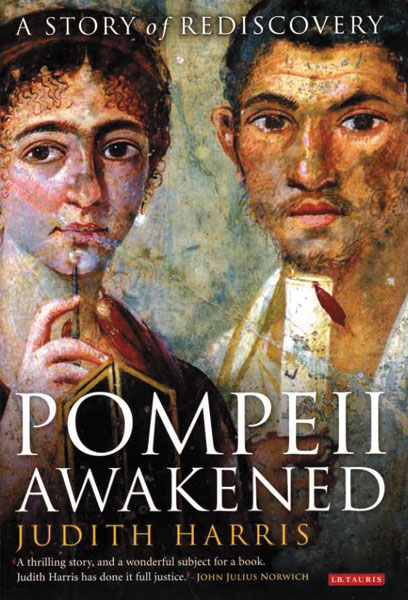
In 79 A.D. Mt. Vesuvius spewed some 10 billion tons of volcanic material to a height of nearly 10 miles. The resulting cloud of superheated detritus then settled back to earth, covering a swath of the coast of the Bay of Naples to a depth averaging more than 40 feet. The coast of Naples was to Imperial Rome what the Hamptons are for New York City. That is, in this lovely waterfront setting were located the summer villas of some of Rome’s most important persons, among them the villa of Flavius Vespasian, the general who nine years earlier led the suppression of the First Jewish revolt and subsequently become emperor.
In Pompeii Awakened, Judith Harris tells the story of the discovery of the long-buried coastal settlements—including not only Pompeii and Herculaneum, but other towns and individual villas—with an impressive command of detail. Her account begins in 1709 C.E., when a farmer’s well revealed precious marble fragments that were subsequently identified as remnants of a Greek-style amphitheater. Further digging yielded astonishing intact statuary, and in short order the treasure hunt was on in earnest.
Harris traces the subsequent history of excavation and discovery through the next three centuries, up to the present time. Her account includes a nearly overwhelming procession of notable personalities, aristocratic dilettantes, scholars, poets, philosophers, scoundrels and heroes, not to mention such prominent figures as Napoleon, Mussolini and J. Paul Getty. Along the way, Harris treats her readers to insightful observations about the political, cultural and economic background of the times, occasionally reminiscent of Barbara Tuchman in her grasp of historical context.
Already a library member? Log in here.
Institution user? Log in with your IP address.

